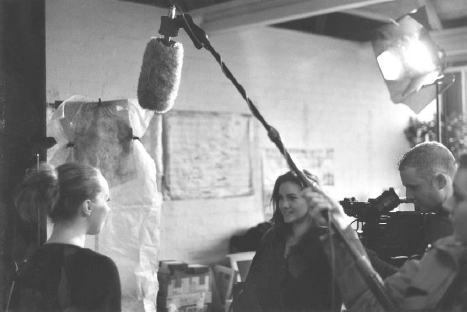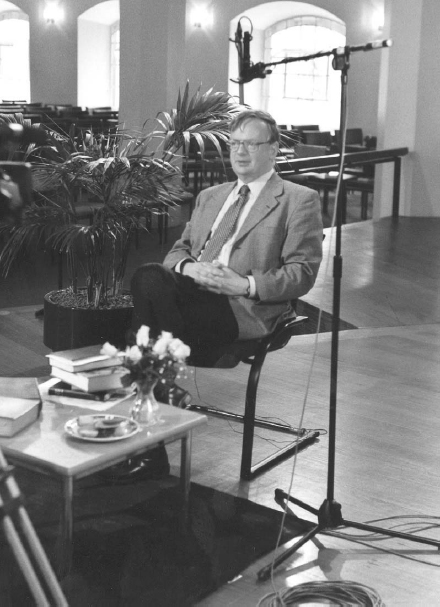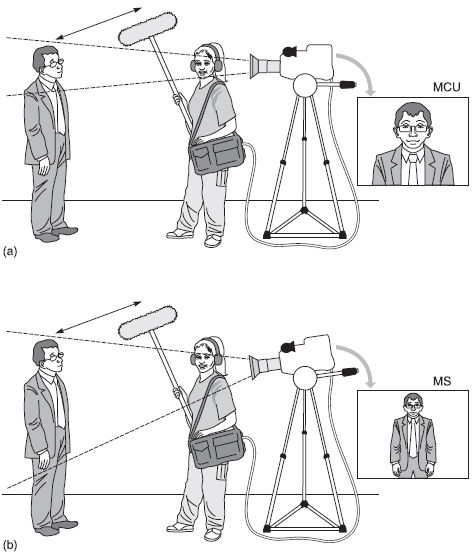10 Mics: placement with regard to speech
More often than not, sound recordists spend the majority of their time recording speech. The main criterion in recording speech is that it is always intelligible. No matter how well lit, framed and composed the pictures may appear, if you can't make out what the person is saying …
The secret of achieving the ‘correct’ sound is being able to place the correct mic in the correct position. The position is all-important, even the world's best mic won't produce good results if it's poorly placed. So, the two decisions you have to make are – which mic/s to use, and how to correctly position it/them.
In the best of all possible worlds, you want to control the position at all times.
The seated indoor interview
Having said that speech is the bread and butter of a sound recordist's work, let's take a closer look at how best to mic what is probably the most common location subject, the seated indoor interview.
Mic choice
This may be dictated by any extraneous noise that you're unable to control, e.g. in a busy working environment, you could encounter problems with air conditioning, noisy machinery, etc. which forces you to get the mic capsule close to the mouth (see also Section 14, Sound balance and location acoustics). This almost certainly necessitates having the mic in shot, thus making the clip mic the one to use (see Section 11, Mics: use of clip mic for seated interview), being the least visually obtrusive, unless the shot is extremely tight to exclude it. Otherwise, in quieter surroundings, most sound recordists choose the gun mic as the de facto standard for this type of work.
If you need to record the interviewer's questions at the same time, you should aim to use the same type of mic for both participants. However, due to the superior quality of the gun mic, if you only carry one in your kit, it's preferable to use it for the interviewee, and one of your others, which may be of slightly lesser quality/sensitivity, for the interviewer; rather than use two clip mics.
Position
The position of the mic is usually governed by the shot size – the tighter the shot, the closer you need to position the mic to the person's mouth to achieve the correct aural perspective. However, if the production requirement is for the shot size to vary, you need to establish a position that gives consistency of sound level. The human ear notices changes in level, and so during an interview, you need consistent sound to ensure edits remain unnoticed. On the other hand, were you to be shooting drama, you may well wish to re-position the mic for each change in shot size in order to match the perspective.
Most recordists operate with the mic on a hand-held pole (Figure 10.1), and an experienced recordist can use this to cover both interviewee and interviewer, as well as subtly altering the mic distance to cope with changes in the level of either voice (see Section 27, Sound recordist operation: pole operation).

Mic stand
Some interviews can be lengthy, and the possibility of fatigue may outweigh the ease of deploying the pole. In these circumstances best results may be obtained by placing a gun mic on a stand.
To allow some flexibility with framing, the mic is usually placed above the top of frame, since changing between MS and MCU doesn't normally alter the headroom excessively. Providing this doesn't cause a shadow problem, or mean that the mic is angled so that it picks up too much extraneous sound, then it's the ideal position (Figure 10.2).
However, constraints on space may mean that you can't always place the stand in an optimum operational position. Moreover, if placed directly on, for example, a wooden or other solid floor surface, it will almost certainly pick up mechanical vibrations transmitted via the floor (although acoustic isolation – thick rubber – should help alleviate the problem).
However, having placed the mic on a stand, and established sound levels before recording, you'll need to ride the gain to cope with variations thereafter. People may raise their voice once they begin an interview, especially if they become enthusiastic, excited or overwrought, or they may lower their voice if they imagine they're imparting confidentialities, or expressing their grief.
See also Section 16, Safety; Cables.


Figure 10.3 The mic remains in the same relative position for each of the two shot sizes. This ensures that the sound level will remain consistent and that any subsequent edit will pass ‘unheard’
